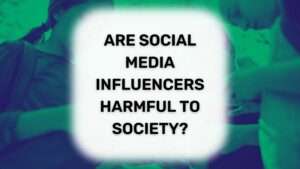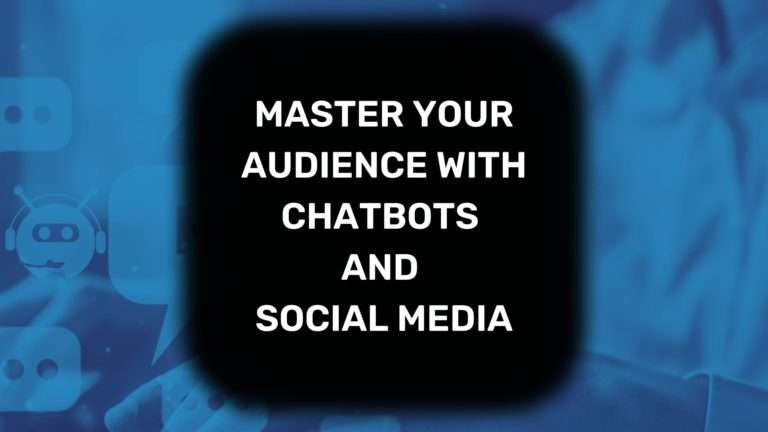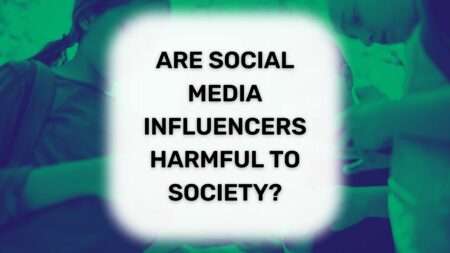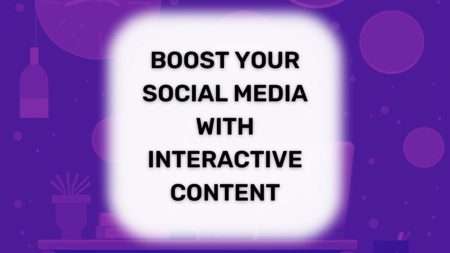What you’ll learn…
Introduction
Engaging with your audience is a vital aspect of any business or brand’s success. Today, the emergence of chatbots and social media has revolutionized the way we interact with our audience. Chatbots are computer programs that simulate human conversation, allowing businesses to engage with their audience in real-time. Social media, on the other hand, provides a platform for businesses to interact with their audience through various channels, including messaging, commenting, and posting.
According to research, 57% of consumers are interested in chatbots for their instantaneity, while 58% of people use social media to discover new products. You can begin to see how utilizing chatbots and social media can be an effective tool for engaging with your audience.
Why chatbots and social media are effective tools for audience interaction
Chatbots and social media have become increasingly popular tools for audience interaction. Here’s why:
Advantages of chatbots over human interaction
Studies show that 64% of people think that 24-hour availability is the top benefit of chatbots. Chatbots are available 24/7, which means that customers can receive assistance or support at any time, without waiting for a human response. Additionally, chatbots can handle multiple requests at once, unlike human agents. This ensures that your audience receives an instant response, regardless of the number of requests you receive.
Examples of effective chatbot interactions
Chatbots can handle a variety of requests, from answering simple queries to providing personalized recommendations. For example, Sephora’s chatbot allows customers to book appointments, receive product recommendations, and try on virtual makeup. The chatbot also sends push notifications to users, reminding them of their appointments or offering exclusive discounts.
Advantages of social media for audience interaction
Social media provides businesses with a platform to engage with their audience through various channels, including messaging, commenting, and posting. Social media also allows businesses to personalize their interactions and engage with customers in real-time. According to research, 71% of customers who have a positive social media experience with a brand are likely to recommend it to others.
Examples of effective social media interactions
Social media can be a powerful tool for businesses to connect with their audience. For example, Netflix uses social media to engage with its audience by posting memes, creating personalized recommendations, and sharing behind-the-scenes content. This creates a more personalized experience for their audience and helps build brand loyalty.
Chatbots and social media are effective tools for audience interaction. Chatbots provide instant responses and can handle multiple requests at once, while social media allows businesses to personalize their interactions and engage with their audience in real-time. The next section will cover tips for utilizing these tools effectively.
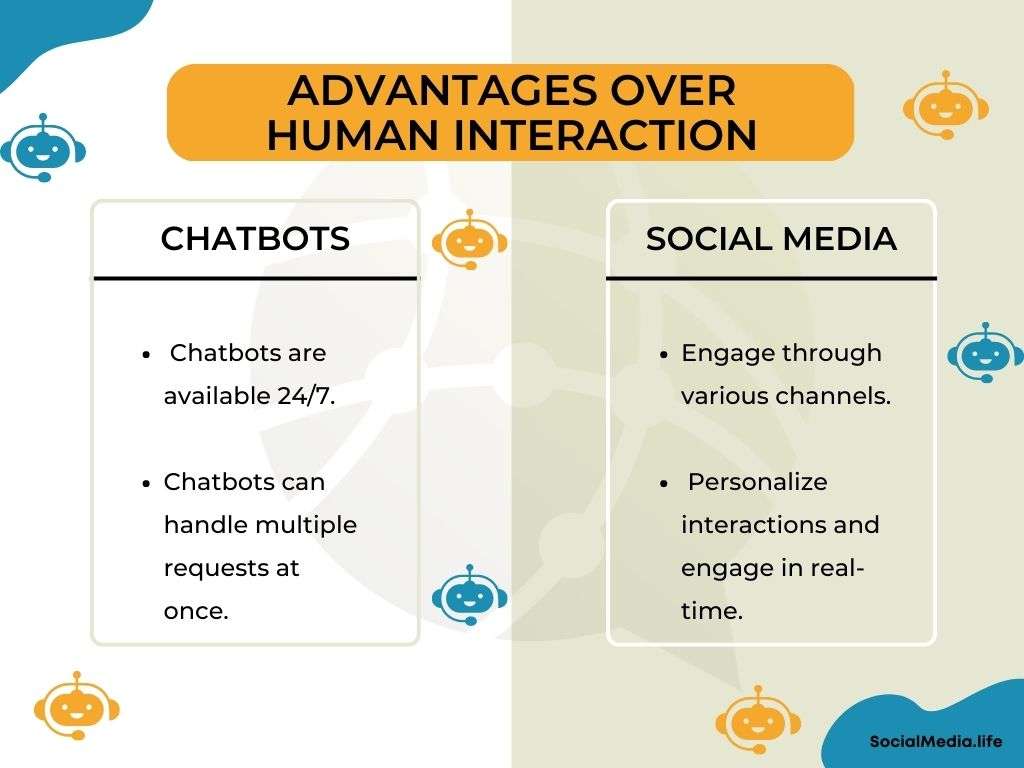
Tips for utilizing chatbots and social media for audience interaction
Create a personalized experience
Personalization is key when it comes to audience interaction. Chatbots can be programmed to remember user preferences and previous interactions, allowing for a more personalized experience. Similarly, social media platforms can be customized to cater to specific interests and needs. This can be done through targeted ads, personalized content, and customized messaging.
Examples of personalized experiences
A great example of personalization is Spotify’s Discover Weekly playlist. The playlist is generated based on the user’s listening history and preferences, creating a unique and personalized experience. Similarly, Amazon’s chatbot recommends products based on previous purchases and user behavior.
Provide value through chatbots and social media
One way to engage with your audience is by providing value through chatbots and social media. This can be done through exclusive content, special promotions, and personalized recommendations. By providing value, you can build a loyal following and increase engagement with your audience.
Examples of providing value
Hootsuite, a social media management platform, offers free social media courses and webinars to its users. This provides value to its audience and helps build trust and loyalty. Additionally, Sephora’s chatbot offers personalized product recommendations and exclusive discounts to its users.
Provide solutions to common problems
Chatbots can be programmed to provide solutions to common problems. For example, an airline chatbot could help customers with flight cancellations or delays. Social media platforms can also be used to address common customer concerns and complaints. By providing solutions, you can build trust and increase customer satisfaction.
Examples of providing solutions
Delta Airlines’ chatbot, “The Delta Bot,” helps customers with flight booking, flight status, and baggage tracking. Similarly, JetBlue’s social media team uses Twitter to address customer concerns and complaints in real-time.
Create a seamless experience
Integrating chatbots into social media platforms can create a seamless experience for users. For example, Facebook Messenger allows businesses to create chatbots that can be accessed directly through the Messenger app. This creates a seamless experience for users, who can interact with businesses without leaving the app. Additionally, creating a consistent brand voice across chatbots and social media platforms can help build brand recognition and trust.
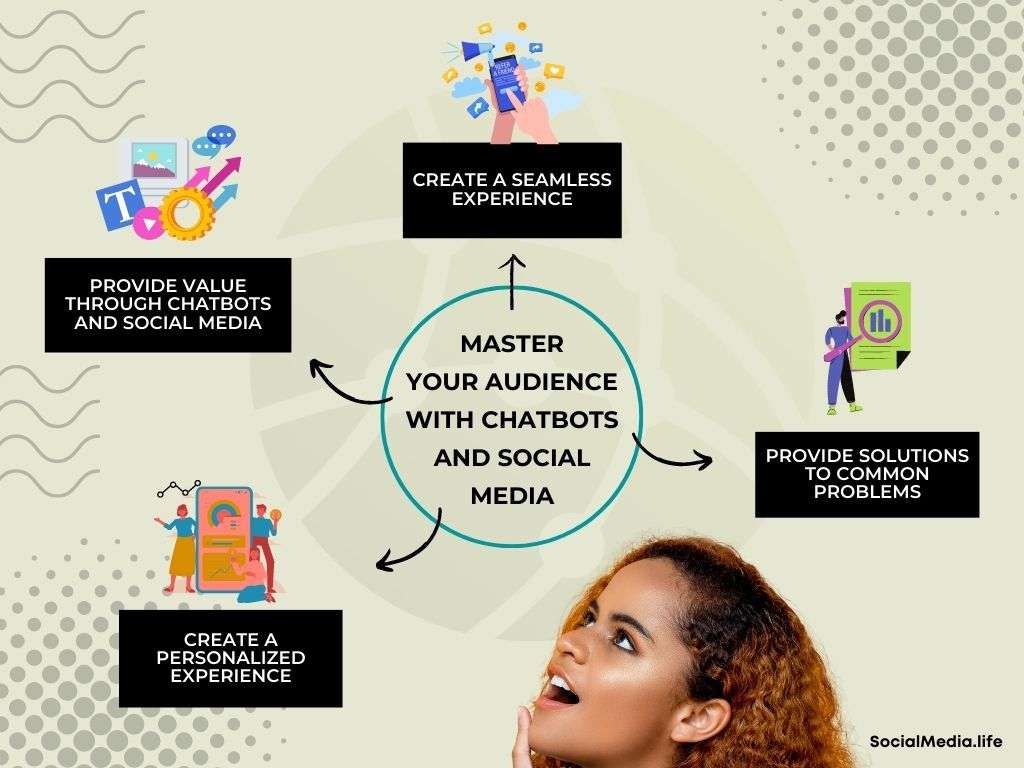
Measuring success
Utilizing chatbots and social media for audience interaction can be an incredibly effective strategy for your business. However, it’s essential to track your progress and measure success to ensure that you’re getting the most out of your efforts. Here are some tips for measuring the success of your chatbot and social media campaigns:
Identify Key Performance Indicators (KPIs)
Before launching any chatbot or social media campaign, it’s crucial to identify key performance indicators that you will track. KPIs are metrics that allow you to measure the success of your campaign against your goals. Examples of KPIs that you might track include engagement rates, click-through rates, and conversion rates.
Analyze data
To measure the success of your chatbot and social media campaigns, it’s essential to analyze data regularly. This involves tracking KPIs, monitoring social media metrics, and reviewing chatbot interactions to understand how users are engaging with your brand. Use analytics tools to track engagement rates, click-through rates, and conversion rates to understand what is working and what needs to be adjusted.
Make adjustments
Based on your data analysis, you can make adjustments to your chatbot and social media campaigns. For example, if you’re not seeing the engagement rates you were hoping for, you might need to adjust your messaging or the type of content you’re sharing. By making data-driven adjustments to your campaigns, you can continually improve your audience interactions and drive success.
By measuring your success regularly, you can ensure that your chatbot and social media campaigns are effective and impactful. Keep track of your KPIs, analyze data, and make adjustments as needed to keep your audience engaged and drive success for your business.
Conclusion
Chatbots and social media are powerful tools for audience interaction that can help businesses and organizations connect with their audience on a personal level. By customizing chatbots and social media platforms, providing value through exclusive content and solutions to common problems, and creating a seamless experience between the two, businesses can engage their audience in a way that is both efficient and effective. Measuring success through key performance indicators and data analysis is crucial for making adjustments and improving the audience experience.
In today’s digital age, mastering audience interaction through chatbots and social media is not only important but necessary for success. By following these tips and strategies, businesses can create a strong relationship with their audience, build brand loyalty, and increase customer satisfaction.

